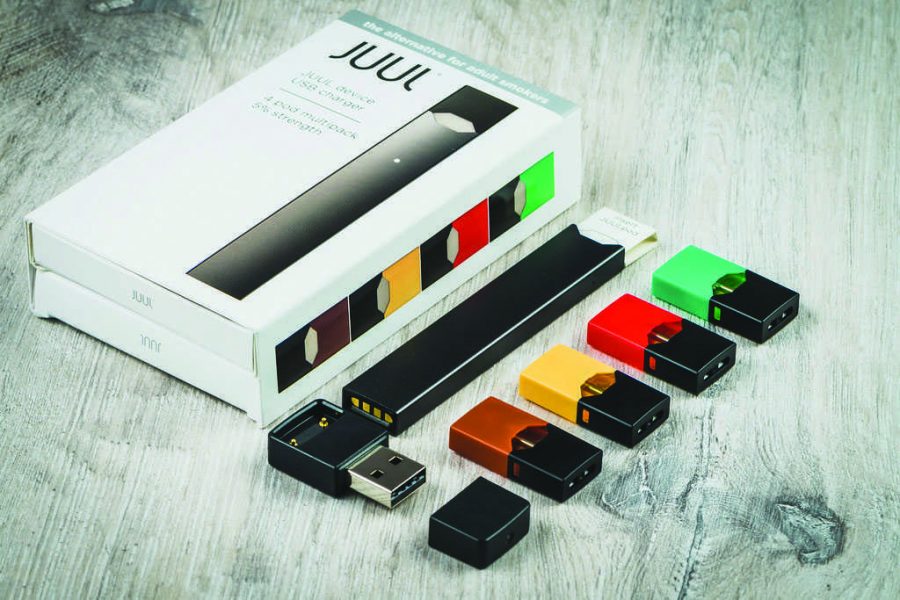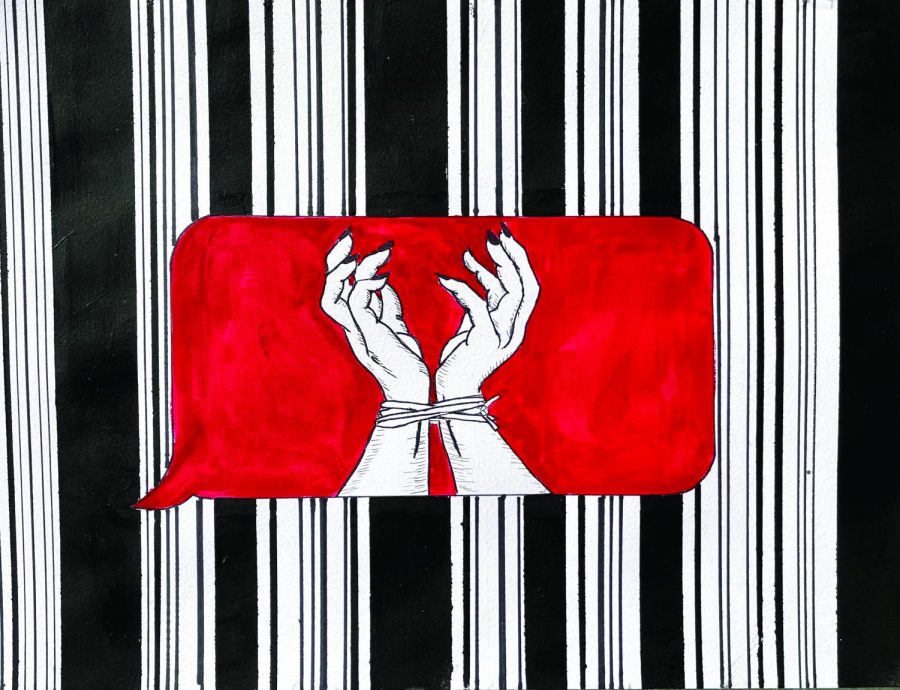//PICTURED ABOVE: Juul promotes its brand with bright colors and fruit flavors.
Recent news about hospitalizations and deaths due to vaping has brought more attention to health risks associated with the practice. More than 500 teens across the country have been hospitalized with vaping-related illnesses, including 14 in Dallas County in the past month, according to an article in The Dallas Morning News.
In response, sophomore Haley Coleman has started an initiative as part of her Girl Scout Gold Award to educate middle schoolers about the dangers of vaping. She plans to speak to the Hockaday eighth-graders later this year and is in contact with multiple schools in the Dallas area to help spread awareness of the dangers of vaping.
“A lot of dangers that I came across in my research last year are just now surfacing,” Coleman said.
She said prevention from an early age is the best way to combat nicotine addiction and the long-term effects of vaping in high schools.
Director of Health Services Erika Herridge is not only a Hockaday school nurse but the parent of a high school student. Herridge said prevention and an open dialogue could encourage teens to seek help for vaping.
“I don’t want it to become a shameful addiction,” Herridge said. “We need to help kids and adults stop vaping, and an open dialogue is one of the biggest things.”
While vaping was marketed as a way to help adult smokers stop smoking, the Centers for Disease Control has seen minors as a large part of the consumer base. Critics say e-cigarette ads target young adults, who already face peer pressure to start vaping. Juul ads feature a glamorized picture of people vaping with flavors such as Creme Brulée or Mango.
“I think they are preying on adolescent kids with these flavors,” Herridge said. “We don’t know what the chemicals are, and teens are impulsive.”
Enticed by flavors such as cotton candy and berry, along with high school-centric advertisements, students become addicted to nicotine. A recent Food and Drug Administration study noted that about 20.8 percent of high schoolers have used e-cigarettes at least once. About 90 percent of smokers start in high school.
One Hockaday student who used to vape but no longer does said she believes the health risks outweigh the attractive aspects of vaping.
“I felt it was pointless,” she said. “It was a 30-second head rush that hurt me and didn’t do anything for me.”
She said she is glad awareness of the detrimental effects of vaping is increasing.
“All of this stuff is coming out about vaping, and this isn’t new,” she said. “Everyone knew in the back of their head that it wasn’t good for them but we ignored it to seem cool.”
She said raising social awareness and stopping the glamorization of vaping is just as important as helping prevention efforts.
“There was this idea of being cool, and everyone else I knew was doing it,” she said. “All of these Instagram influencers I looked up to had a Juul in their hand.”
Although vaping companies advertise that there are no proven health effects, it takes the FDA five to 10 years to fully research it. Regardless of inconclusive research data, studies have proven that inhaling substances other than air is unhealthy. Several states have already started to pass legislation to limit vaping. Michigan banned all flavored nicotine products and Texas has made it illegal for anyone born after Sept. 1, 2001 to buy nicotine products until they turn 21. President Donald Trump is backing a nationwide ban on flavored e-cigarette products, based on the FDA recommendation.
“Being addicted to vaping is a whole lot about getting off of nicotine products and the liquids in the e-cigarettes,” Coleman said.
With the long-term effects of vaping not widely known yet, the teens who have been hospitalized are the first indicators of the long- term consequences of vaping. Vaping nicotine is part of the problem, but teens also are using e-cigarettes to vape marijuana products. Both these marijuana products and other vaping solutions contain ingredients such as oils that can be harmful to the lungs.
“In general, it’s best to not inhale something,” Herridge said. “Your lungs are precious, and when you are inhaling something other than oxygen, you are ruining them.”
Story by Sahasra Chigurupati
Photo provided by Flickr













